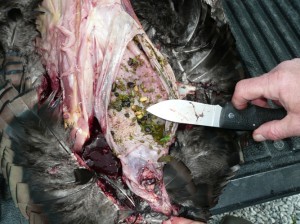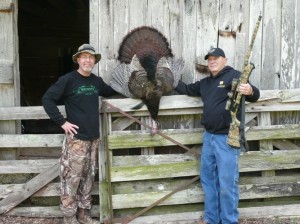Learning from Harvested Critters!
Filed under: Deer Hunting, Hunting Blog, Turkey Hunting
Unless you manage land in an area where the primary land use is commercial ag production, it requires good food plots to produce forage and grain on a year round basis. The corn and soybean rotation in areas where the primary land use is commercial ag production provides a great diet for deer, turkey, and many other wild species. Even though these crops are harvested, the combines spill a bit of grain that provides high quality food through the winter.
However, as combines become more efficient, there is less and less spilled grain available for wildlife. This is why it’s important to plant specifically for wildlife in both areas with and without commercial ag production.
There have been four turkeys harvested so far during 2011 at The Proving Grounds. I checked the crop in three of these turkeys and each of them contained soybean grain! The last was yesterday when my 80 year old father harvested an adult gobbler. It was a thrilling hunt and the real trophy was the time spent with my father. The gobbler and video was a bonus. However, I always want to learn from the harvested critter as much as practical. I call this scouting from the skinning shed!


This goes beyond recording weight, spur length, and beard length. One of the most important sources of information from all harvested critters is what’s in their gut (or crop when talking about turkeys). Even though it’s late April and we’ll begin planting Eagle Seed soybeans soon, this turkey had soybeans in its crop. My father harvested this gobbler just after noon, so the crop wasn’t full (he had probably been chasing hens all morning) but it still contained soybeans.
Truly the Eagle Seed beans planted during April and May 2010 are still feeding wildlife at The Proving Grounds a year later. That’s an extreme value! Scouting from the skinning shed also provides me with more confidence on where I should take Tracy, my wife, hunting later this week.
The next time you harvest a critter don’t pass on the opportunity to learn about the local habitat and current hunting information. Sometimes the best scouting occurs without leaving the skinning shed.
Growing Deer together,
Grant



